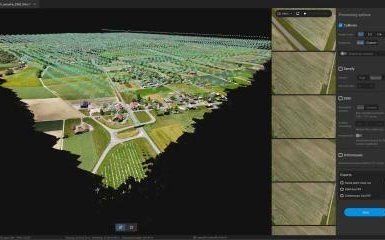Data fabric is an end-to-end data integration and management solution for enterprises that includes architecture, data management, integration software, and shared data. A data fabric gives each member of an organization a single, consistent user experience and real-time access to data.
Data fabric is intended to assist organizations in managing their data in order to solve complicated data problems and use cases, regardless of the numerous types of applications, platforms, or places where the data is kept. Data fabric provides frictionless access and sharing in a distributed data environment.
Why Use Data Fabric?
Any data-centric company requires a comprehensive strategy addressing time, space, software, and data locations. Data must be available to people who require it, not hidden behind firewalls or scattered across multiple sites. To succeed, businesses must have a safe, efficient, unified environment and a future-proof data solution. This is provided via a data fabric.
Traditional data integration can’t keep up with the needs of real-time connectivity, self-service, automation, and universal transformations in today’s business world. Although gathering data from diverse sources is usually not an issue, many businesses cannot integrate, process, curate, or change data from other sources.
This critical step in the data management process must be completed in order to provide a complete picture of customers, partners, and products. This gives businesses a competitive advantage by allowing them to better satisfy client expectations, modernize their systems, and use cloud computing to their advantage.
The data fabric can be visualized as a garment that stretches around the globe, connecting all of the organization’s users. The user can be anywhere in this fabric and still have real-time access to data stored at any other location.
What is the Structure of Data Fabric?
Data fabrics combine data from legacy systems, data lakes, data warehouses, SQL databases, and apps using data services and APIs to provide a comprehensive view of business performance. It tries to generate more fluidity among data environments, in contrast to these distinct data storage systems, in order to combat the problem of data gravity—that is, the assumption that data gets more difficult to move as it grows in size. A data fabric abstracts away the technological intricacies involved in data transfer, transformation, and integration, allowing all data to be accessed across the organization.
The aim of data fabric designs is to loosely couple data in platforms with applications that require it. In a multi-cloud setting, one example of data fabric architecture might look like this: one cloud, such as AWS, supervises data ingestion and another platform, such as Azure, oversees data transformation and consumption. Then there’s the possibility of a third party providing analysis services, such as IBM Cloud Pak® for Data. The data fabric architecture connects different ecosystems to form a unified data view.
However, this is only one example. Because different organizations have diverse needs, there is no single data architecture for a data fabric. The numerous cloud providers and data infrastructure implementations ensure that enterprises have a wide range of options. Businesses that use this form of data framework, on the other hand, have architectural similarities that are specific to a data fabric.
How Does Artificial Intelligence or Machine Learning Work with Data Fabric?
Data engineers and data scientists attempted to connect the dots in data to uncover patterns in the early stages of data storage. They discovered that traditional data integration strategies required them to spend more time on data logistics rather than learning about the data. If we want to get to insights faster, we can’t keep doing this.
A data fabric is a data operational layer that not only gathers data but also transforms and processes it using machine learning to uncover patterns and insights. This has to happen in each application without a data fabric, which is not a long-term solution.
A data fabric can automatically and sustainably prepare data to satisfy the needs of AI and ML. Machine learning may proactively deliver data and insights, allowing decision-makers to have better insights and information more quickly. The desired outcomes are identifying hidden truths from data without having to hunt for them or ask for them, as well as finding solutions to problems or business insights.
How has Data Fabric been Used by Businesses?
In terms of acceptance, data fabrics are still in their infancy, but their data integration capabilities benefit enterprises in data discovery, allowing them to tackle a number of use cases. While the use cases that a data fabric may cover are similar to those of other data products, it distinguishes itself by the scope and scalability with which it can handle data silos. Companies and their data scientists may construct a comprehensive image of their consumers by integrating data from numerous sources, which has proven particularly useful for banking clients. Customer profiles, fraud detection, preventative maintenance analyses, return-to-work risk models, and other applications have all benefited from data fabrics.
What Are The Benefits of Data Fabric?
Data fabric is appropriate for enterprises with a global footprint, many data sources, and complicated data concerns or use cases. Remember that a data fabric is not a quick fix for data integration and processing. You can use data virtualization to accomplish this.
Globalization is growing into previously unconnected places, thanks to continuing breakthroughs in hardware capabilities. As connectivity speeds increase, organizations may become inundated by data from devices and services. While data has been used for insights for a long time, data fabric offers a solution that includes:
- Retaining maximum integrity and regulatory compliance while maintaining accessibility and real-time information flow
- Scalable with minimal disruption, with no need for exorbitantly expensive gear or highly skilled and expensive personnel.
- An adaptable paradigm that allows for system modifications adjusts and adapts as needed and works with all operating and storage systems.
Businesses should take advantage of the huge volumes of data they have access to in order to gain unique insights. Forecasting, sales, supply chain optimization, marketing, and consumer behavior are just a few of the areas where the company has a competitive advantage and data leadership in its field. Real-time insight extraction can set your company apart from the competition.






